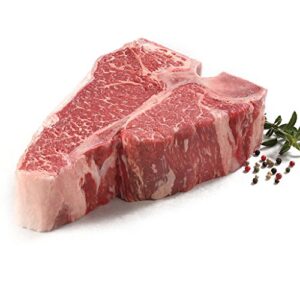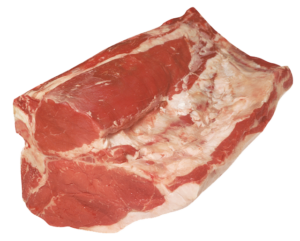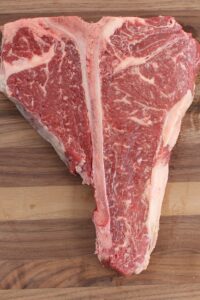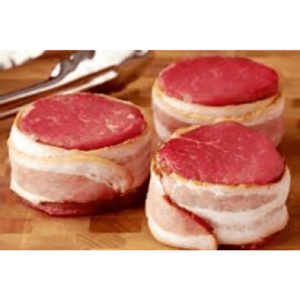A Guide to the Cuts of Beef Part Six

The Purpose of the Post:
In ‘A Guide to the Cuts of Beef Part Five’, we explored the complexities of cuts derived from the Beef Sirloin, highlighting the variations resulting from different processing methods. Building upon this discussion, we left off with the butcher or meat processor obtaining Porterhouse and T-bone steaks, leaving behind remaining portions of the Beef Sirloin for further processing. In this upcoming post, we will delve into these remaining cuts, shedding light on their culinary potential. Stay tuned for insights into the next chapter of beef cuts exploration. If you would like to read my blog post ‘A Guide to the Cuts of Beef Part Five’ you can find it here https://fireinthekettle.com/a-guide-to-the-cuts-of-beef-part-five/
A Side Note:
In continuation of our exploration into the intricacies of beef cuts, it’s worth delving into the process behind obtaining T-Bone steaks from the Beef Sirloin. After removing Porterhouse Steaks, butchers often employ a technique known as ‘spinning’ the beef sirloin. This involves repositioning the meat to optimize cutting. The beef sirloin naturally tapers, with one end larger and thicker than the other due to the anatomy of the cow. Spinning ensures efficient and accurate cutting, adjusting the orientation of the remaining meat for the production of T-Bone steaks.

The Differences:
A Porterhouse Steak is sourced from the Short Loin of the cow (steer) and features a unique combination of the Tenderloin (filet) and the Strip steak (New York Strip). In comparison to the T-bone Steak, which also originates from the Short Loin, the Porterhouse typically contains a larger portion of the Tenderloin. This generous inclusion of the Tenderloin, renowned for its tenderness, enhances the Porterhouse’s appeal. By offering a blend of the Tenderloin’s tenderness and the Strip Steak’s robust flavor, the Porterhouse Steak stands as a premium choice among steak enthusiasts.


How Do They Know:
A butcher or meat processor determines the transition from cutting Porterhouse Steaks to T-Bone Steaks based on a combination of factors, including their expertise, the specific requirements of the cuts, and the desired thickness and size of the Tenderloin portion. Drawing upon their experience and knowledge of meat anatomy, the butcher carefully assesses each cut to ensure optimal quality and yield. Once satisfied that the Tenderloin portion has achieved the desired thickness and size, and considering the amount of remaining meat available, the butcher adjusts their cutting technique accordingly.


A Recap:
In ‘A Guide to the Cuts of Beef Part Five,’ we explored how the butcher separates the Round from the Beef Sirloin, utilizing precise cuts and tools to ensure accuracy. Once separated, the butcher faces a crucial decision: whether to remove the Whole Tenderloin, yielding Boneless Sirloins, Fillets, and Strips, or to leave the Tenderloin intact, resulting in bone-in Sirloins, Porterhouse steaks, and T-bones. If opting for the latter, the butcher preserves the integrity of the Fillet and Bone, which produced three Porterhouse Steaks and three T-Bone Steaks with a remaining portion of the Beef Sirloin. This blog post will pick up from that point.
The Remaining Portion of the Beef Sirloin:
The butcher or meat processor begins by removing the Fillet from the remaining portion of the Beef Sirloin, employing an eight-inch boning knife for precision. During this process, it’s essential to address a section of connective tissue known as the “chain,” which accompanies the Tenderloin. This “chain” refers to a strip of connective tissue that runs alongside the Tenderloin muscle and is typically removed by the butcher during trimming. Due to its tougher texture and lesser desirability for consumption compared to the Tenderloin itself, the connective tissue is separated and discarded during trimming.
The Fillet Mignon:
After the butcher removes the Tenderloin from the Beef Sirloin and completes necessary trims, the Tenderloin is portioned into steaks. A classic filet mignon is typically cut to a thickness ranging from about 1 to 2 inches (2.5 to 5 centimeters). This thickness facilitates uniform cooking and preserves the steak’s tenderness and juiciness, ensuring optimal results regardless of the desired level of doneness. It’s worth noting that the Tenderloin naturally tapers toward one end, forming a narrower section referred to as the “tail” or “tail end” of the tenderloin. This tapering shape, inherent to the muscle’s anatomy, is a characteristic feature of many cuts of meat, influencing both cooking techniques and presentation.

Removing the Bone:
The next step in the process involves using a band saw to separate the bone from the Beef Sirloin. This step is crucial for the butcher or meat processor to obtain Strip Steaks from the cut. While the initial removal of the bone is done using a band saw, there may still be residual bone fragments remaining. These fragments are carefully removed by the butcher or meat processor using a semi-stiff boning knife. Once all the bones are extracted, the butcher or processor flips the cut over to trim away excess fat using the same type of knife.
The Strip Steak:
The Beef Strip Steak, commonly referred to as the ‘New York Strip,’ owes its name to its association with New York City, where it has remained a menu staple for decades. This cut is typically derived from the short loin of the cow, specifically from the larger side of the T-shaped bone found in porterhouse or T-bone steaks. When a butcher cuts strip steaks, it often indicates that the bone has been removed, resulting in the separation of the Tenderloin (commonly used for Filet Mignon) from the Strip Steak portion. This separation yields two distinct cuts without the bone. Strip Steaks are typically sliced to a thickness of one and one-quarter inches by the butcher or meat processor.
In Closing:
In this blog post, my aim was to demystify the complexity surrounding the cuts of beef originating from the Beef Sirloin. I delved into the process of separating the Beef Sirloin from the Round portion of the hindquarter, as explored in my previous blog post ‘A Guide to the Cuts of Beef Part Five’ available here https://fireinthekettle.com/a-guide-to-the-cuts-of-beef-part-five/. Following this, I detailed the extraction of three Porterhouse Steaks and three T-Bone Steaks, leaving behind a portion of the Beef Sirloin for further processing. I then examined the cuts that could be made after removing the bone, focusing on Fillet Mignon and Strip Steaks. It’s crucial to remember that specific cuts are obtained based on the butcher’s processing instructions. Looking ahead, I’ll continue exploring the remaining cuts from the hindquarter of the cow (steer) in my next blog post. Remember, your feedback is invaluable. Please share your thoughts by clicking the ‘Click Here to Send Us Your Comments on This Post’ link below. Thank you for reading!
